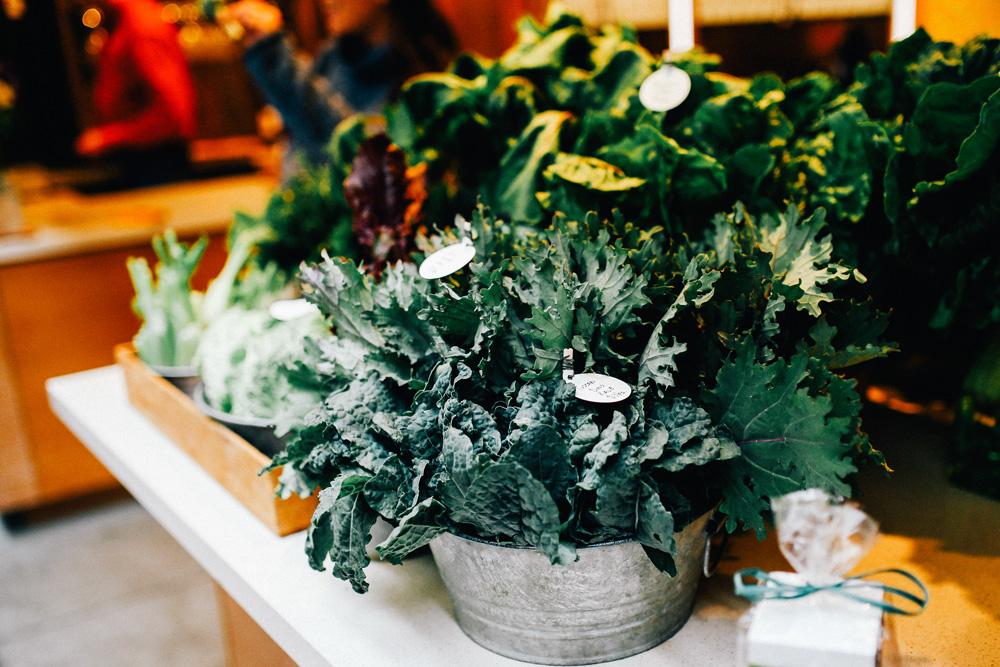I made a peach coffee cake on Monday. It was the highlight of each morning to warm up a slice of coffee cake and enjoy it with a latte. It was so thoroughly delicious, I literally woke up excited to get up so I could breakfast.
Contrary to the title of this post, peaches are not, currently, in season in Minnesota. Their season is late summer, but these were purchased at peak season and stored in the freezer, until this week I found a use for them when making my meal plan. It was pure delight to find this recipe and realize I could make it without spending a penny, using just what was in my pantry and freezer.
This delicious breakfast, coupled with a resource I discovered recently, has got me thinking about buying produce in season. It’s not something I’ve always done, but have become increasingly conscious of it over recent years.
Why would I bother to know what’s in season before I get groceries, you say? I’m so glad you asked.
5 reasons to buy produce in season
1. It tastes better.
A tomato harvested in my hometown in late August sunshine will taste completely different than a tomato that is grown hundreds of miles away in the middle of winter and transported via truck to arrive on my plate. There is simply no question that when eating or preserving food for later, the absolute best time to do it is when nature is serving up that variety in harvest after a bountiful season.
2. It costs less.
This is a pretty magical truth, if you ask me. When produce tastes its very best, the stores also have access to large quantities of it. Thanks to the nature of supply and demand, they slice the cost of in-season produce to move it off the shelves while it’s still fresh. Hello, 8 pints of strawberries for a dollar. Get in my belly (and in my freezer). Apply this rule to your entire meal plan all year long, and your grocery bill is seeing serious savings.
3. It’s more sustainable for the environment.
Let’s use my example of the tomatoes from above. Think about the resources it takes to get a tomato from a community farm, to the farmer’s market, to my home. Compare that to a tomato grown in a place that’s currently warm enough to support the plant—I don’t know where that is, but it’s no less than a thousand miles from here, and likely farther. Consider the fuel, human hours, extra packaging and mass refrigeration.
4. It’s better for your body.
Nature has a magical way of giving us what we need, when we need it. In the spring, tender sprouts and spring greens give us the nutrients we need to be healthy during a time of year when new growth is exploding and we’re becoming more active. In the winter, heavier, heartier produce is needed to give us sustenance to keep warm in the cold season. You don’t have to understand the science behind it to reap the benefits of nature’s brilliance when it comes to the nutrition your body needs—just eat foods that are in season.
5. It allows meal time to become a seasonal ritual.
Too much of a good thing is easy to take for granted, but when the ingredients for grilled garlic bread salad are only in season for a couple months, you better believe I’m savoring each bite and commemorating the last meal of the season, until my mouth starts watering in anticipation again the next year. Preparing and eating seasonal favorites is a wonderful way to celebrate the changing seasons and embrace a cycle that is fleeting and transient, yet repeats itself so reliably.
How to figure out what’s in season in your location
Easy peasy! I recently discovered the Seasonal Food Guide by Sustainable Table. You can select your location and the time of year, or alternately, you can search by food to find out when you can look forward to eating it at its peak. Plus, find recipe ideas to use the fruits and vegetables.
Click the button below to find out what’s in season for your next meal plan.
Sustainable Food Guide
Eating in season + making a meal plan
Integrating seasonal produce into your meal plan is surprisingly easy. Here are a few tips:
- Bookmark the Sustainable Food Guide, along with your favorite recipes on Pinterest and other food-related favorites, for easy access when you’re making your meal plan and grocery list.
- Check the sale flyer for your grocery store to see what’s on sale, and pay attention to the big displays at the front of the store. If you’re seeing an abundance of oranges and grapefruits as far as the eye can see, or piles and piles of squash, it’s often safe to assume those are in season.
- When you hit on a great deal on delicious seasonal produce, you don’t have to eat it all right away. Freezing and canning are both great options to preserve peak flavors to enjoy later.
When I’m making a meal plan, I’ll first make note of the ingredients I have that I want to use up. Then I’ll check out what’s in season. Often, between the list of ingredients from these two places, the menu for the week will practically make itself.
Need help with meal planning? Check out Rosy Blu’s ever-so-reasonable Meal Planning Kit to learn how to make a meal plan that saves money and cuts down on stress and food waste, in just 4 steps and as little as 10 minutes a week.
